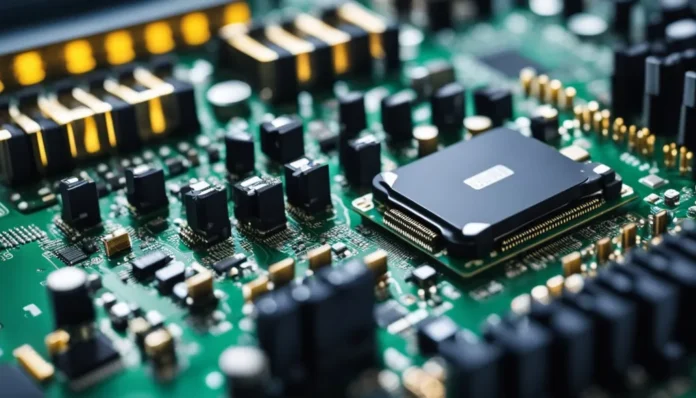DRAM performance is based on both speed and latency. Often misunderstood, CAS latency is not always the best indicator. To achieve optimal performance, it is essential to combine speed and CAS latency, measured in nanoseconds.
Latency is often referred to as “CL” in RAM kit specifications. It simply indicates the number of clock cycles it takes to deliver data after a command is received. Actual latency is calculated by multiplying the duration of a clock cycle by the total number of cycles. This measurement is based on two things: the number of clock cycles (CL) and the duration of each cycle in nanoseconds.
Key Takeaways
- Memory performance depends on speed and latency.
- Actual latency is calculated in nanoseconds.
- CAS latency is just one aspect of overall RAM performance.
Latency calculation and examples for DDR4 and DDR5 memory kits:

To calculate the true latency of a memory kit, use the following formula:
True Memory Latency (ns) = (2000 / RAM Speed (MHz)) x CAS Latency (CL)
DDR4
Example of calculations:
| RAM Speed (MHz) | CAS Latency (CL) | Actual latency (ns) |
|---|---|---|
| 2400 | 16 | (2000 / 2400) x 16 = 13.33 |
| 3200 | 18 | (2000 / 3200) x 18 = 11.25 |
DDR5
Example of calculations:
| RAM Speed (MHz) | CAS Latency (CL) | Actual latency (ns) |
|---|---|---|
| 4800 | 32 | (2000 / 4800) x 32 = 13.33 |
| 6000 | 36 | (2000 / 6000) x 36 = 12.00 |
These calculations help understand how speed and CAS Latency influence the actual latency of DDR4 and DDR5 memory modules.
Conclusion: What you need to remember
To get the best performance from your system, choosing the right RAM kit is crucial. Check the memory speed compatibility with your processor and motherboard . For example, Ryzen 7000 processors typically support up to 6000 MHz for DDR5, while Raptor Lake processors can reach up to 8000 MHz. Memory latency also plays a crucial role. Lower latency improves performance, especially for activities like gaming, content creation, and data analysis. Choosing the right balance between speed and latency improves the stability and compatibility of your system.
Frequently Asked Questions
What are the impacts of CAS latency on system performance?
CAS latency, or Column Address Strobe, is critical in determining how quickly RAM can deliver data to the processor. Higher CAS latency can slow down system performance, especially during intensive tasks like video editing or gaming. For optimal performance, lower CAS latency is often preferable.
How does CAS latency affect DDR5 memory read and write speeds?
DDR5 memory read and write speeds are directly impacted by CAS latency. Lower CAS latency allows for faster access to data, which improves transfer rates. This results in faster response times and better overall memory efficiency.
How does CAS latency differentiate between different types of RAM?
CAS latency differs between RAM types, such as DDR3, DDR4, and DDR5. For example, DDR5 RAM often has a lower CAS latency than its predecessors, which improves performance. This difference helps to better tailor RAM types to the specific needs of each user, whether for gaming, office work, or professional applications.
What are the benefits of lower CAS latency for demanding applications?
For demanding applications, such as video editing software, video games, and complex simulations, lower CAS latency can significantly improve performance. Lower CAS latency means memory can respond more quickly to CPU requests, reducing wait times and increasing smoothness of operations.
How can we calculate the impact of CAS latency on memory timing?
Calculating the impact of CAS latency on memory timing can be done by multiplying the CAS latency by the RAM clock cycle. For example, if the CAS latency is 16 and the clock cycle is 0.5 nanoseconds, the access time would be 8 nanoseconds. This helps in understanding how long it takes for the memory to access specific data.
What CAS latency is recommended for a gaming computer?
For a gaming computer, a lower CAS latency is recommended to reduce response times and improve performance. Gamers often look for CAS latency around 14-16 to achieve a smoother and more responsive gaming experience. This also helps maximize the potential of GPUs and high-demand games.


